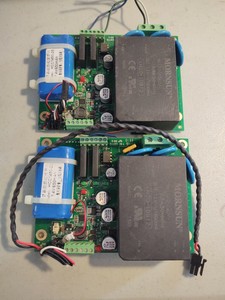


Keytouch has extensive experience designing controls found in operator panels, and has the ability to communicate in a wide range of interfaces. Keytouch designs and manufactures complete operator panel solutions. The company promotes a culture of personal development that enables each employee to grow professionally within the company and challenge all of the employees to ensure that Keytouch is operating to the best of its abilities. The comprehensive training ensures that our employees and management personnel are provided with abundant personal development opportunities and rewards. Keytouch strives to provide the best possible service for its customers and also to maintain a healthy and secure work environment.
#KEYTOUCH TECHNOLOGY AS ISO#
Since its inception in 1988 Keytouch has enjoyed significant growth and success, achieving ISO 9001 certification in 1994 and building up an international clientele that includes such industry leaders as SAAB, General Electric, L-3 Communications, and Norway’s leading defense manufacturer, the Kongsberg Group. This analysis sheds light on technology and product development of participating touch panel display vendors.KEYTOUCH TECHNOLOGY A.S., designs, manufactures and markets Control and Display Systems combining Membrane Technology with Electronic and Mechanical solutions to provide customized turnkey products to domestic and international OEM customers.įounded in the Norwegian town of Horten, Keytouch has quickly become one of Norway’s leading producers of membrane technologies. Gonzalez Convention Center from May 31 to June 5. This report analyzes touch panel display products showcased at the SID Display Week 2009, held in the US city of San Antonio at the Henry B. However, in consideration of price tags and cost competitiveness, it is expected that out-cell touch panel displays will remain the most common products at the SID in the next few years. For the on-cell design, a polarizer is applied to the upper layer of a touch panel, and such a design features even better display performance than out-cell touch panels.

The main reason behind this development may be that the on-cell touch panel technology will not affect the yield rate of TFT-LCD panels. Looking ahead to SID 2010, it is forecasted that the market expansion of on-cell touch panels will surpass in-cell touch panels. Moreover, as the yield rate of TFT-LCD panel production process will be affected by in-cell touch panel technology, PFD makers have therefore hesitated towards adopting in-cell touch panel technology. Looking at the 42 touch panel display products showcased at SID 2009, it can be seen that the adoption rate of in-cell touch panels has dropped while that of on-cell touch panels has increased, as in-cell touch panels are customized products and cannot compare with on-cell and out-cell touch panels in terms of pricing. Out-cell Touch Panel Displays Remain Mainstream Importance of In-cell Touch Products Encroached upon by On-cell Products Nevertheless, such problems do not arise for e-paper displays powered by electromagnetic resonance touch panel and photo sensor touch panel technologies.ĭriven by growing market demand for these emerging applications, the newer-generation touch panel technologies have been successfully commercialized in recent years. In these new application products, touch panels are mainly used for reflective e-paper displays.įrom the actual devices showcased at SID 2009, this research finds that reflective e-paper displays equipped with the traditional touch panels will suffer from weakening of contrast, reflection, and opacity. The trend shows that the adoption of newer-generation touch panel technologies has seen significant growth, thanks to their use in emerging applications such as e-document and e-book readers. Compared with SID 2008, it can be seen that the adoption rate of newer-generation touch panel technologies has leapt from 2.4% to 26.2%, while that of traditional technologies dropped from 83.7% to 73.8%. Other newer-generation touch panel technologies, including electromagnetic resonance touch panel and photo sensor touch panel technologies, account for the other 26.2% combined. Of the 42 touch panel display products showcased at SID 2009, the resistive and capacitive touch panel technologies combined account for 73.8% in terms of adoption.

Adoption of Newer-generation Touch Panel Technologies Sees Significant Growth


 0 kommentar(er)
0 kommentar(er)
